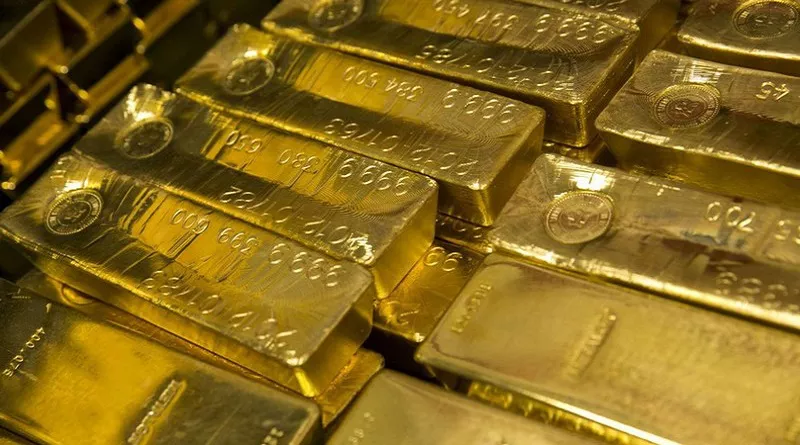Gold has enjoyed a remarkable surge in 2024, marking its best performance since 1979. With the SPDR Gold Trust (GLD) increasing more than 32% this year, gold has outperformed broader market indices. Factors such as geopolitical tensions and gold’s role as a hedge against inflation are anticipated to sustain its upward momentum. As the U.S. presidential election approaches on November 5, analysts speculate on the potential impact of the election outcome on gold prices.
A Year of Strong Performance
The rise in gold prices has been attributed to various economic factors, including geopolitical instability and persistent inflation concerns. Investors are increasingly viewing gold as a safe haven during uncertain times. Historically, gold has been a reliable store of value, especially in periods of economic turbulence, and this year’s performance has reinforced that perception.
As the election draws near, the fiscal health of the United States is also under scrutiny. Whether Vice President Kamala Harris or former President Donald Trump emerges victorious, the country’s financial landscape will significantly influence gold’s trajectory. Analysts predict that gold will maintain its impressive gains, driven by several interconnected factors.
Divergent Views Among Top Investors
In recent weeks, notable investors have voiced opinions that challenge traditional economic narratives. Billionaire investor Stanley Druckenmiller has revealed significant bearish positions on U.S. Treasury bonds, raising eyebrows in the financial community. Similarly, Paul Tudor Jones, another billionaire, stated in an interview that “all roads lead to inflation,” suggesting a more pessimistic outlook despite current economic indicators pointing toward declining inflation.
These comments underscore a growing concern among investors regarding the U.S. government’s management of its finances. While recent data may suggest a cooling inflation rate, Druckenmiller and Jones are particularly worried about the unsustainable trajectory of national debt and fiscal policy.
Rising National Debt and Fiscal Concerns
The total U.S. national debt is nearing $36 trillion, with the federal deficit for the fiscal year 2024 already surpassing $1.8 trillion. This substantial debt now constitutes 124% of the country’s GDP, necessitating significant annual allocations for interest payments. In fact, this year alone, the U.S. government has spent approximately $882 billion on interest payments, accounting for 13% of total budget expenditures.
Druckenmiller and other prominent investors caution that the current fiscal situation may be heading toward a crisis, potentially impacting the bond market. If investors lose confidence in the government’s ability to service its debt, bond prices could plummet while yields soar, prompting a flight to safer assets such as gold.
Factors Supporting Continued Gold Price Increases
Several key reasons suggest that gold prices may continue to rise in the near future:
1. Fiscal Uncertainty
The ongoing fiscal uncertainty in the U.S. is likely to intensify unless significant legislative action is taken. The scale of the national debt poses a monumental challenge for lawmakers, raising doubts about their ability to implement effective solutions. If investors begin to question the government’s capacity to manage its financial obligations, gold may emerge as a more attractive investment option.
2. Hedge Against Inflation
Gold has long been regarded as a hedge against inflation. As inflationary pressures persist, particularly in the context of high national debt, gold may become an increasingly appealing asset for investors seeking to protect their wealth. The perception of gold as a tangible asset provides reassurance amid fluctuating economic conditions.
3. Potential Crisis in the Bond Market
Should confidence in U.S. Treasuries wane, the bond market could experience significant volatility. Falling bond prices and rising yields would likely drive investors toward gold as a safer alternative. This shift could amplify demand for gold, further propelling its price upward.
The Election’s Influence on Gold Prices
As the presidential election approaches, market observers are closely monitoring its potential impact on gold prices. The outcome of the election could shape fiscal policy and influence broader economic conditions, affecting investor sentiment. Regardless of who wins, the pressing issues surrounding national debt and inflation are expected to remain at the forefront of economic discourse.
Analysts contend that regardless of the election outcome, the underlying economic challenges will likely persist, sustaining gold’s appeal. The uncertainty surrounding fiscal policy and the overall economic landscape could bolster demand for gold, allowing it to retain its upward momentum.
Conclusion: A Bullish Outlook for Gold
The convergence of geopolitical tensions, inflation concerns, and fiscal uncertainty paints a complex picture for the future of gold prices. With the U.S. national debt climbing and investor confidence waning, gold is expected to continue its ascent, driven by both economic fundamentals and market sentiment.
As investors navigate the uncertain waters leading up to the U.S. presidential election, many may find solace in gold’s historical stability and its reputation as a safe haven. Whether driven by inflation fears or fiscal challenges, the demand for gold is likely to remain strong in the coming months, setting the stage for further price increases.
In a landscape marked by uncertainty, gold continues to shine as a viable investment option. As the election looms and economic conditions evolve, the precious metal’s trajectory will be closely watched by investors and analysts alike.
Related topics:

